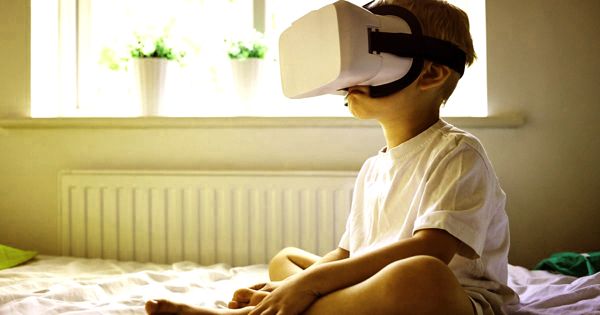Virtual Reality test Helps Measure a person’s Vulnerability to Stress
Stress is your body’s way of responding to any demand or threat. Everyone responds to stress differently. We all react to stress in different ways. Any event that causes stress is called a “stressor”. Our bodies are equipped to handle acute exposure to stressors, but chronic exposure can result in mental disorders, e.g. anxiety and depression, and even physical changes, e.g. cardiovascular alterations as seen in hypertension or stroke-disorders.
Using wearables and other sensing technologies has made some progress in the elderly and at-risk individuals; however, given how different our lifestyles are, it has been elusive objective markers of psychogenic disease.
There has been a significant effort to find a way to identify people who would be vulnerable to develop stress-related disorders. The problem is that most of that research has relied on self-reporting and subjective clinical rankings, or exposing subjects to non-naturalistic environments.
The researchers measured the heart rates of the participants as they went through each VR scenario, collecting a large body of heart-rate variation data under controlled experimental conditions.
Approaching the problem with VR
Behavioral scientists at EPFL have developed a virtual reality test that assesses a person’s vulnerability to stress while exploring immersive environments. Now, behavioral scientists led by Carmen Sandi at EPFL’s School of Life Sciences have developed a virtual reality (VR) method that measures a person’s susceptibility to psychogenic stressors. The resulting model offers the field of stress research one of the first such tools that do not rely on subjective evaluations.
The test was built based on previous animal studies. It captures high-density locomotion information from a person while exploring two virtual environments to predict heart-rate variability when exposed to threatening or highly stressful situations. Heart rate variability is emerging in the field as a strong indicator of vulnerability to physiological stress, and for developing psychopathologies and cardiovascular disorders.
VR stress scenarios
The researchers measured the heart rates of the participants as they went through each VR scenario, collecting a large body of heart-rate variation data under controlled experimental conditions. In the study, 135 participants were immersed in three different VR scenarios. In the first scenario, they explored an empty virtual room, starting from a small red step, facing one of the walls. The virtual room itself had the same dimensions as the real one that the participants were in so that if they touched a virtual wall, they would feel it. After 90 seconds of exploration, the participants were told to return to the small red step they’d started from. The VR room would fade to black, and then the second scenario would begin.
In the second scenario, the participants found themselves on an elevated virtual alley several meters above a virtual city’s ground. They were then asked to explore the alley for 90 seconds and then return to the red step. Once on it, the step began to descend faster and faster it reached the ground level. Another fade, and then came the final scene.
In the third scenario, the participants were “placed” in a completely dark room. Armed with nothing but a virtual flashlight, they were told to explore a darkened maze corridor, in which four human-like figures were placed in corner areas, while three sudden bursts of white noise came through the participant’s headphones every twenty seconds.
Developing a predictive model
Scientists measured the participant’s heart rates when they went through each VR scenario. Later, they analyzed the locomotor data from the first two scenarios using machine-learning methods and developed a model that can predict a person’s stress response – changes in heart rate variability – in the third threatening scenario.
Scientists then tested the model and found that its predictions can work on different groups of participants. They also confirmed that the model could predict stress vulnerability to a different stressful challenge.
Finally, the researchers also confirmed that their model outperforms other stress-prediction tools, such as anxiety questionnaires. Carmen Sandi says: “The advantage of our study is that we have developed a model in which capturing behavioral parameters of how people explore two novel virtual environments is enough to predict how their heart rate variability would change if they were exposed to highly stressful situations; hence, eliminating the need of testing them in those highly stressful conditions.”
Measuring stress vulnerability in the future
The research offers a standardized tool for measuring vulnerability to stressors based on objective markers and paves the way for the further development of such methods.
“Our study shows the impressive power of behavioral data to reveal individuals’ physiological vulnerability. It is remarkable how high-density locomotor parameters during VR exploration can help identify persons at risk of developing a myriad of pathologies -cardiovascular, mental disorders, etc – if exposed to high-stress levels. We expect that our study will help the application of early interventions for those individuals at risk.”
















